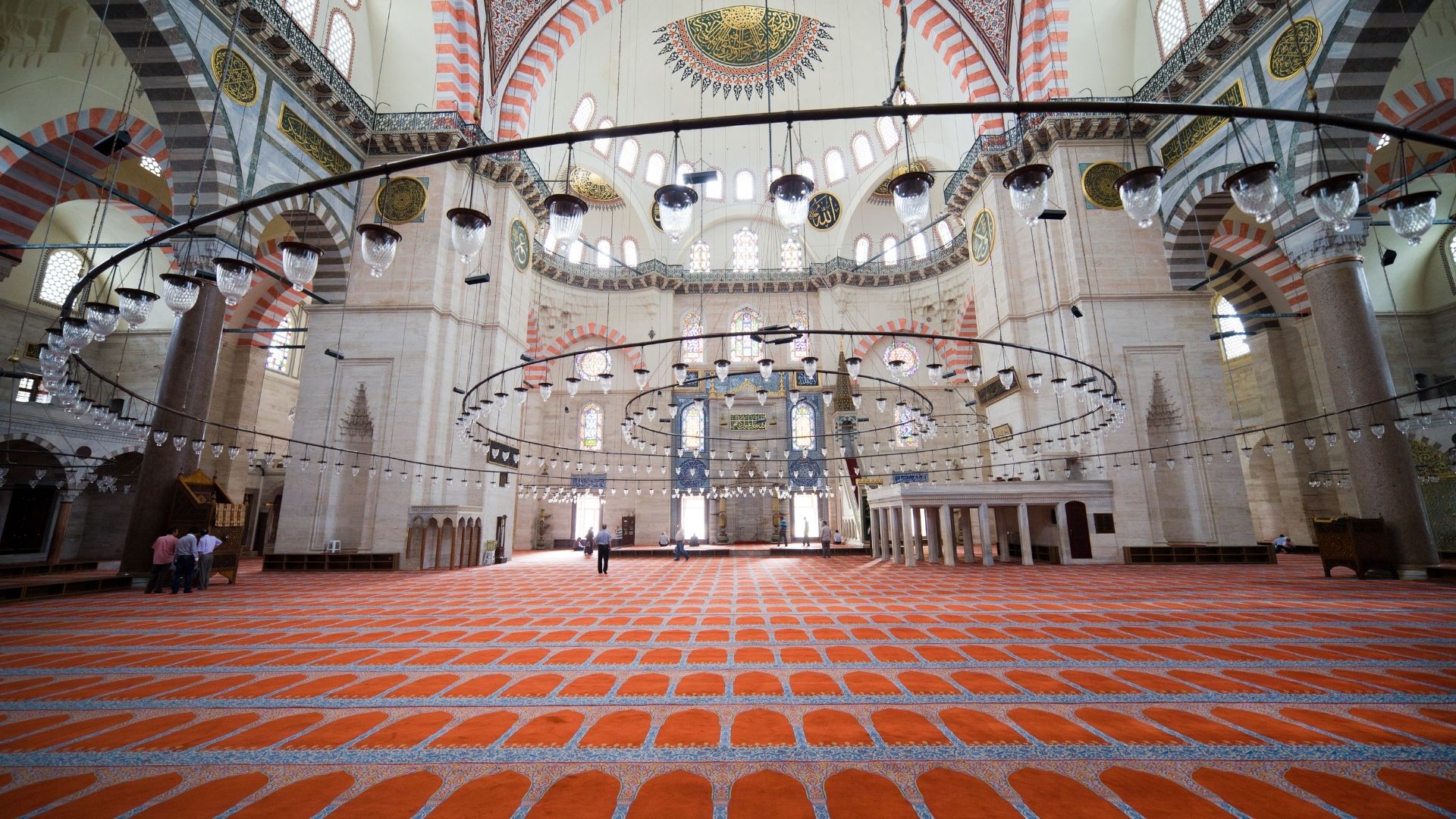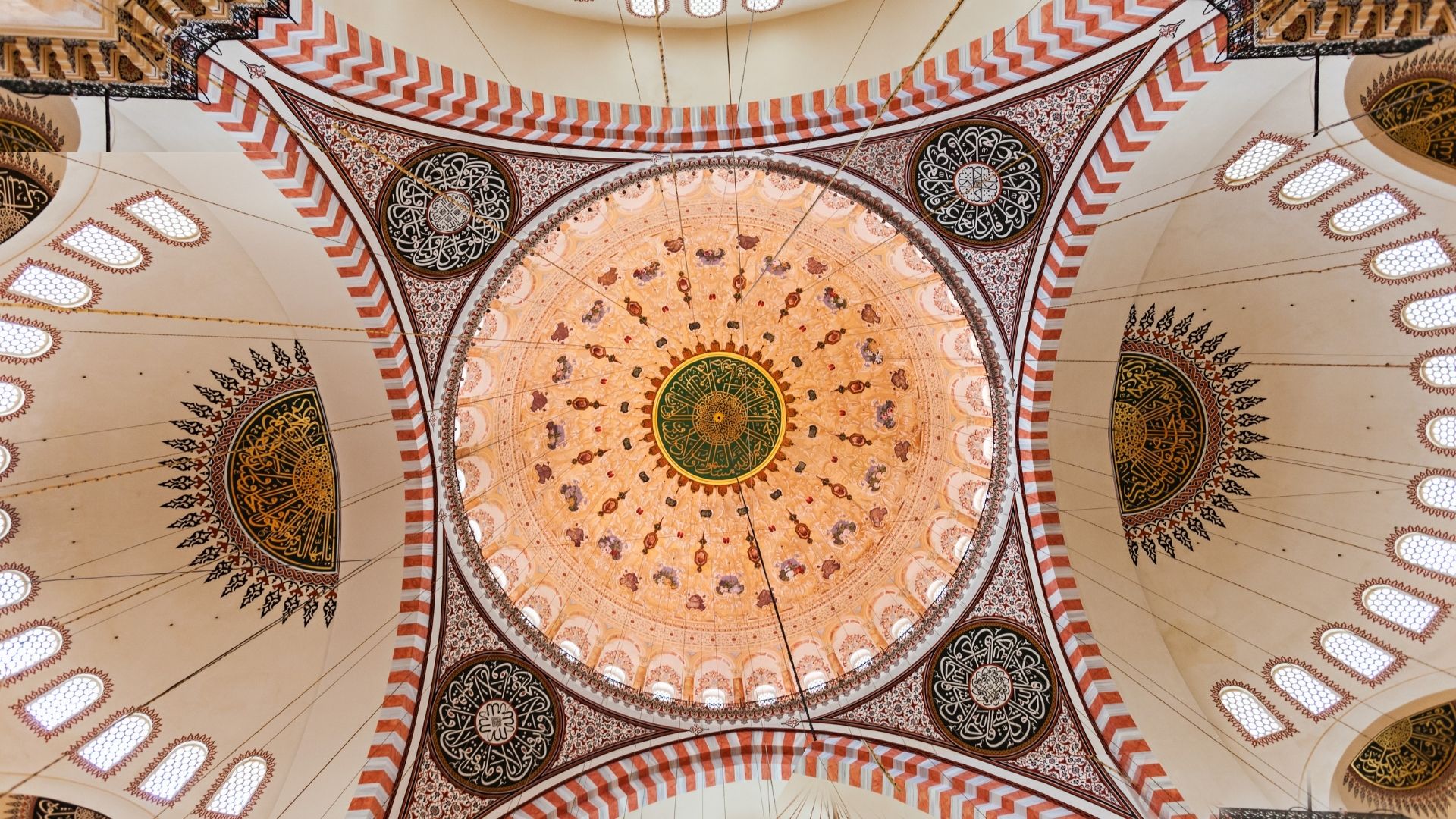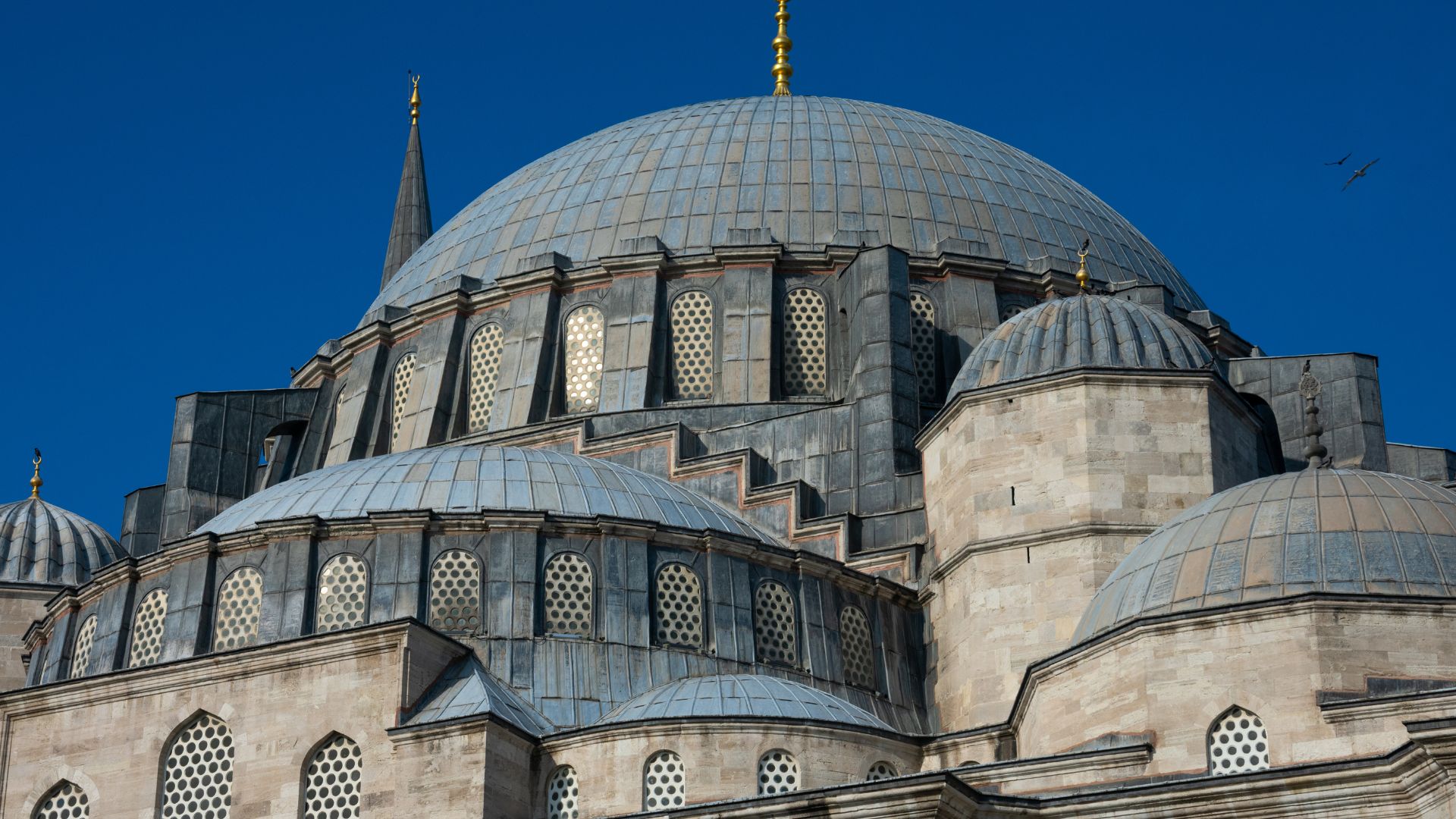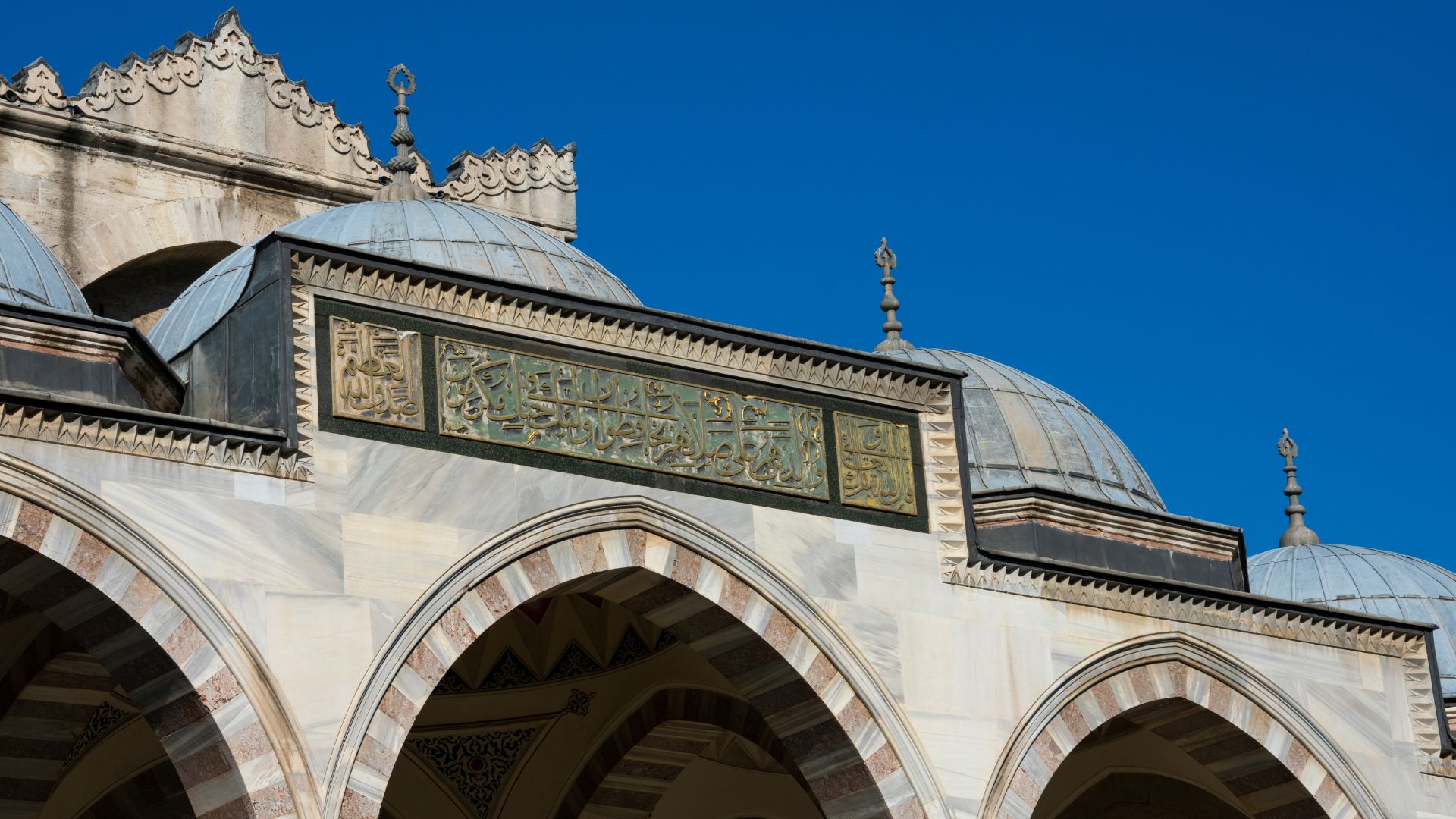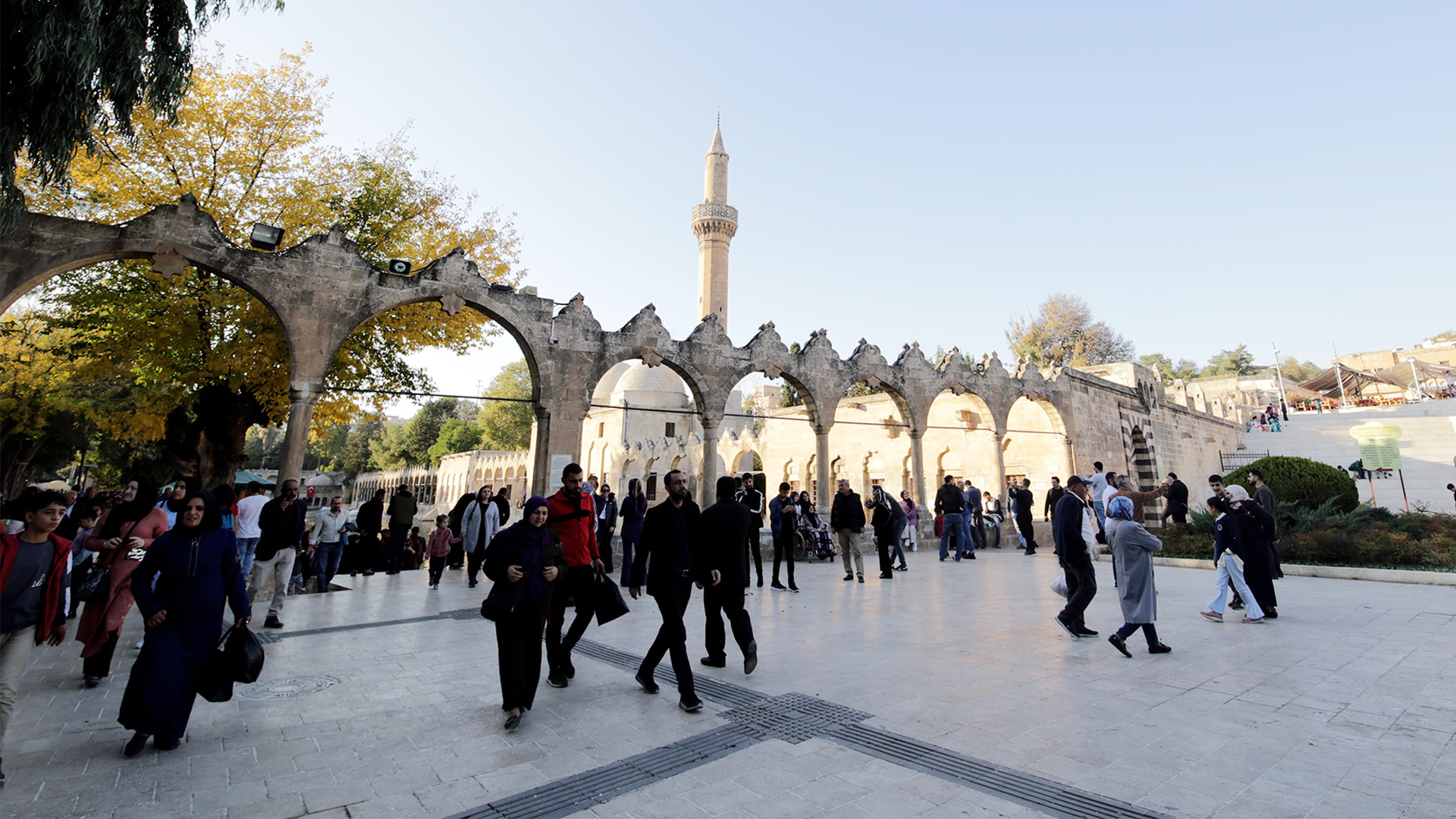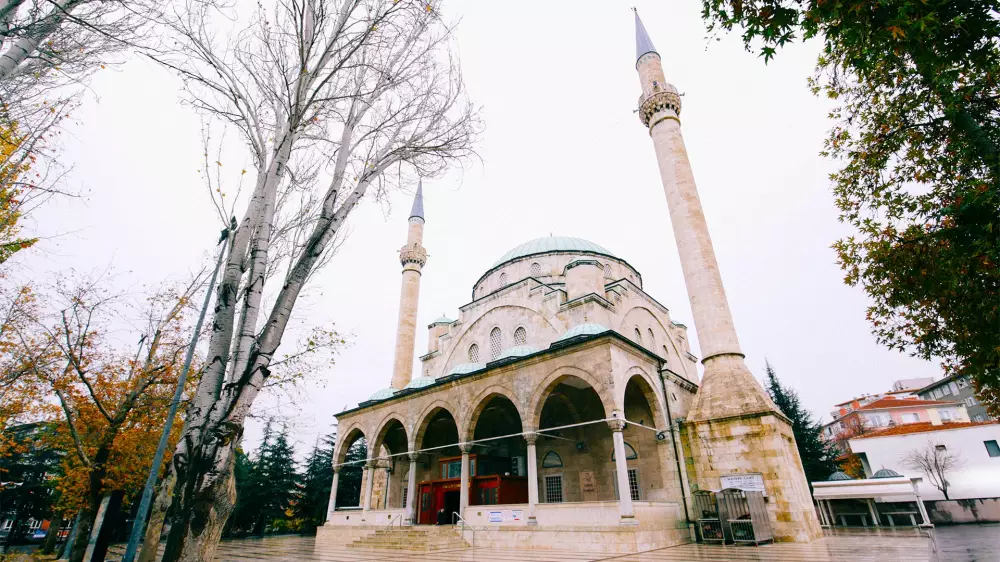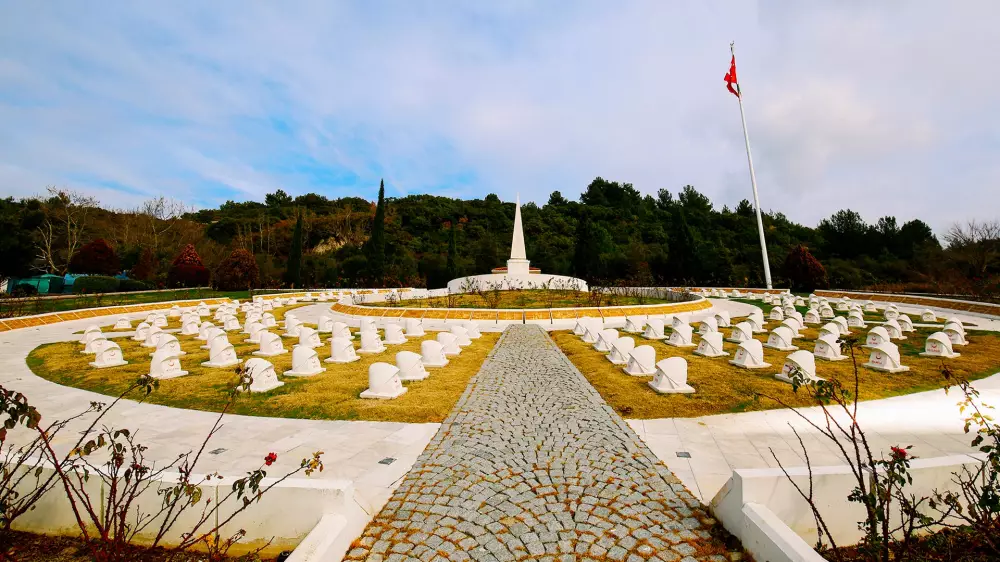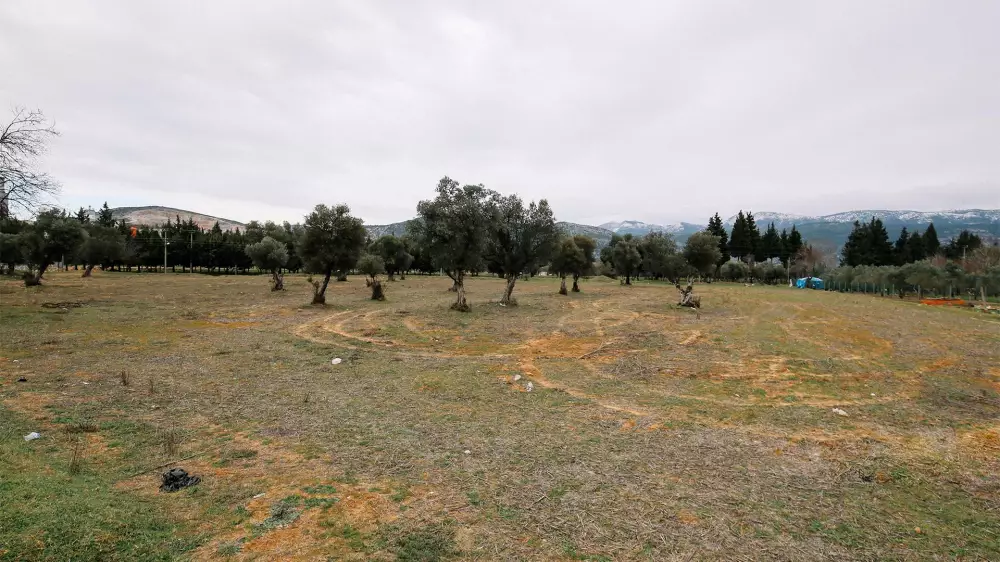
Suleymaniye Mosque
11.11.2024 11:32
Süleymaniye Mosque, located in Istanbul’s historic peninsula, is a significant structure built by the architectural genius of the Ottoman Empire, Mimar Sinan. Referred to as the “masterpiece of Mimar Sinan’s apprenticeship,” the mosque was more than a place of worship; it symbolized power during the Ottoman era.
Süleymaniye Mosque stands at the center of a vast complex (külliye) that includes a madrasa, library, primary school, hospital, cemetery, soup kitchen, and shops. With a dome rising 59 meters high, Süleymaniye Mosque holds a prominent position in Istanbul’s skyline.
The mosque's spacious courtyard is surrounded by arcades supported by ornate columns. Situated at the heart of the Süleymaniye Complex, it embodies all features of classical Ottoman architecture and is celebrated as an urban planning marvel.
General Features of Süleymaniye Mosque
Süleymaniye Mosque was commissioned in 1550 and completed in 1557, taking approximately seven years to construct. A significant amount of time was dedicated to reinforcing the mosque’s foundations.
The mosque’s construction was ordered by one of the most powerful rulers of the Ottoman Empire, Sultan Suleiman the Magnificent. At the head of the project was Mimar Sinan, who considered it his “journeyman work.” Süleymaniye Mosque is one of the most significant works reflecting Mimar Sinan’s talent and artistic genius.
Construction took place from 1550 to 1557, with the first five years dedicated to stabilizing the sloped terrain where the mosque stands. These careful foundation works have ensured the structure’s resilience over centuries.
Süleymaniye Mosque has four minarets with a total of ten balconies, symbolizing Sultan Suleiman as the tenth Ottoman sultan.
The mosque’s cemetery houses prominent figures of the Ottoman Empire. The tombs of Sultan Suleiman the Magnificent and his wife, Hürrem Sultan, are located here, along with some of the key statesmen from the 15th and 16th centuries.
Architectural Features of Süleymaniye Mosque
Süleymaniye Mosque represents the pinnacle of Ottoman architecture. Among the most impressive works of Mimar Sinan, its architectural features are noteworthy:
Acoustic Design: Pickling jars were used inside the mosque to enhance acoustics, allowing sound to carry clearly across the vast space.
Lighting System: The mosque’s lamps were arranged to channel their smoke into a soot room, where the soot was collected to produce ink. Additionally, ostrich eggs were placed in chandeliers to prevent spiders from weaving webs.
First Mosque with a Soot Room: Süleymaniye Mosque is known as the first mosque in the world to feature a soot room, showcasing a unique engineering approach to its lighting system.
During Ramadan, the mosque’s spiritual atmosphere intensifies. Crowds gather in the courtyard for iftar, and the interior and surroundings fill up during Tarawih prayers. Süleymaniye Mosque is one of the best places in Istanbul to experience the spiritual ambiance of Ramadan.
Süleymaniye Mosque and Its Complex
Located in Istanbul’s Fatih district, in the Süleymaniye neighborhood, the mosque is situated at the heart of the historic peninsula, visible from many points across the city.
The Süleymaniye Complex was built to provide social services during the Ottoman period, housing madrassas, a library, a hospital, a soup kitchen, and shops. These structures formed an integral part of the socio-economic fabric of the Ottoman Empire.
Mimar Sinan and Süleymaniye Mosque
Mimar Sinan, one of the greatest architectural masters of the Ottoman Empire, is renowned for his many significant works, notably Süleymaniye Mosque. Born in 1490 in the village of Ağırnas in Kayseri, Sinan came to Istanbul at a young age and trained within the Ottoman military structure.
Sinan’s interest in architecture developed as he participated in military expeditions, where he honed his skills in both construction engineering and structural design. He gained experience in building bridges, fortresses, and roads, eventually emerging as an accomplished architect and engineer within the Ottoman army.
Sinan completed his formal education and technical training at the Hassa Architects’ Guild, the leading engineering school of the time, which propelled him to the pinnacle of Ottoman architecture and led to his appointment as chief architect. In this role, Sinan refined the classical architectural style while also pioneering innovative designs.
Some of Mimar Sinan’s most renowned works include:
Şehzade Mosque (1548): Known as Sinan’s “apprenticeship work,” this structure in Istanbul’s Fatih district was built in memory of Şehzade Mehmed and marks Sinan’s first major mosque project.
Selimiye Mosque (1575): Called Sinan’s “masterpiece,” this mosque in Edirne showcases his architectural genius at its peak. Sinan considered it his greatest work.
Mihrimah Sultan Mosques: Built in Istanbul’s Üsküdar and Edirnekapı districts for Mihrimah Sultan, these mosques are other notable projects displaying Sinan’s skill.
- Rüstem Pasha Mosque: Known for its stunning decorations, particularly the İznik tiles, this mosque is one of Sinan’s most visually striking works.
Throughout his life, Sinan left his mark across the Ottoman territories by constructing more than 80 mosques, nearly 50 smaller mosques, over 50 madrassas, as well as numerous bridges, caravanserais, and hospitals. He passed away in 1588 at the age of 98, leaving behind a legacy that endures through his surviving structures and the architectural inspiration he provided for generations. Mimar Sinan, as the foremost representative of Ottoman architecture, reflects the power of the Ottoman Empire and the intricate beauty of Turkish-Islamic art in structures like Süleymaniye Mosque in Istanbul.
Süleymaniye Mosque Through the Eyes of Evliya Çelebi
Evliya Çelebi describes Süleymaniye Mosque with great admiration in his “Seyahatname.” His words capture the magnificence of the structure and reflect the power of the Ottomans with deep sensitivity. According to Evliya Çelebi, Süleymaniye is “like a jewel shining upon Istanbul’s chest.”
“A mosque whose dome reaches to the heavens, whose walls rise to the skies, its dome a pillar holding the celestial dome itself.”
With these words, Evliya Çelebi expresses the grandeur of Süleymaniye’s dome, which in his view, is not merely an architectural element but a symbol of divine power.
He was also fascinated by the mosque’s acoustics. Observing the pickling jars placed by Mimar Sinan for acoustic purposes, he marveled:
“The sound of the Qur’an recited here echoes so beautifully that every soul that hears it melts and feels reverence.”
Evliya Çelebi highlights not only the mosque’s physical form but also the spiritual experience it offers visitors. He describes each sound within the mosque as possessing a depth that profoundly touches the human soul.
Evliya Çelebi was also impressed by the mosque’s lighting system, noting the care Sinan took to collect lamp soot for ink production:
“It collects the soot so finely that the ink made from it is used to write sacred texts.”
With these words, Evliya Çelebi underscores that the mosque served not only as a place of worship but also as a building that catered to the practical needs of Ottoman society.
Lastly, as he described the minarets, Evliya Çelebi expressed his admiration:
“The minarets are so elegant and delicate that anyone who looks upon them feels as if they rise to the heavens.”
To Evliya Çelebi, Süleymaniye Mosque was not merely a building but a unique structure that embodied the spirit of the Ottoman Empire. He felt that the mosque’s stones were crafted with a grace that uplifted the human soul, carrying hearts towards the heavens. For Evliya Çelebi, Süleymaniye was not just a structure but a spiritual journey.
Visitor Tips for Süleymaniye Mosque
Visitors can enjoy a pleasant walk through the historic peninsula to reach Süleymaniye Mosque. After exploring the mosque, they may dine at the famous “kuru fasulye” (bean stew) restaurants across the courtyard. The humble tomb of Mimar Sinan, located beside the mosque, is also worth a visit.
Süleymaniye Mosque is an essential destination for those who wish to experience Istanbul’s historical essence and witness the finest details of Ottoman architecture. As the “journeyman’s work” of Mimar Sinan, every detail of Süleymaniye Mosque reflects the grandeur of the Ottoman Empire and its artistic vision. This unique structure stands out among our cultural heritage that has come down to us through the ages.
Gallery
